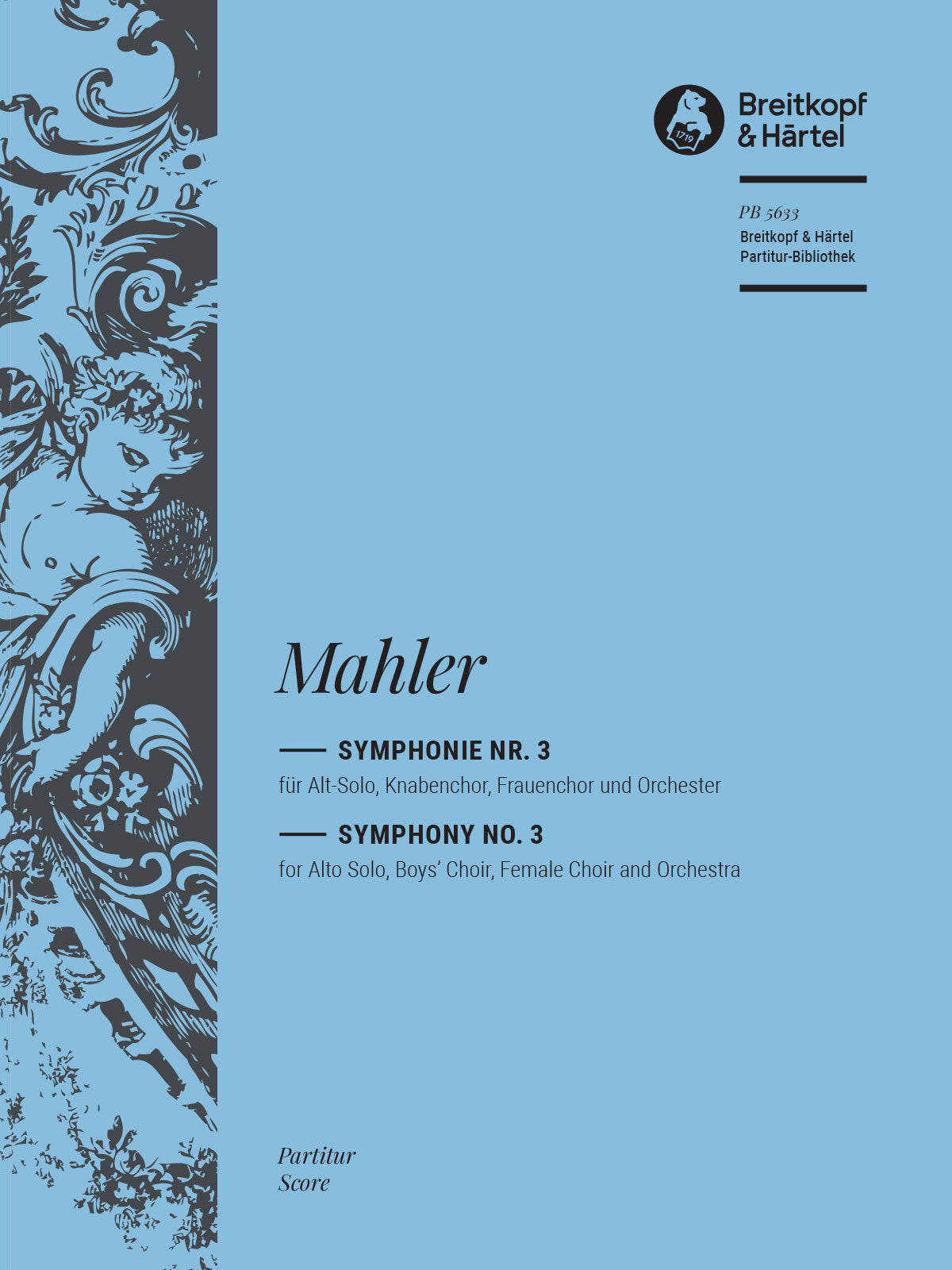In my descriptions of Mahler's previous two symphonies, I liken my listening experience to a journey, one only made satisfying by a strong arrival point or destination.
Such a metaphor continues to be apt for Symphony no. 3, where here the trek is one of great length.
The timing doesn't bother me really, as long as the music takes care to bring along the listener across the entire experience.
I think Mahler does, and continues to write his musical themes and motives in bright, bold colors in order to see the development and arrival of his musical purpose.
Yet, I understand this work is one in which listeners rarely revisit or have a trouble grasping. There are a few reasons, length only being one aspect.
There are six movements, with the outer movements being the longest, almost an hour to themselves. The last movement is the slow movement too, so it is a most unusual pacing from Mahler.
But then again, there are those musical themes peppered throughout the first movement. Most would point to the glorious horns at the opening, who thankfully return later, the solo trombone (my least favorite portion), or perhaps even the many marches across the first movement. Yet it is the incessant, rising trumpet, the quiet percussion interludes, and the fast, grumbly double basses and bassoons that catch my attention every time.
As with his earlier symphonies, Mahler's musical depictions of nature return, and most interestingly, play 'out of time' with the music, making the bird calls more natural sounding and less composed music.
The following two movements are dances of sorts and provide breezy contrast to the long opening. The first is more stately, yet quite pastoral, while the following is more scherzo-ish, almost sounding in the vein of Dukas' Sorcerer's Apprentice. In other words, there is a Mendelssohn-ian swirling to Mahler's orchestrations to the third movement. Opposite of this is a heavenly, off-stage flugelhorn solo, a moment of utter delicate rapture that arrives unexpectedly.
As with Mahler's early symphonies, there is an element of voice and chorus. I find their inclusion a nice break within such a long runtime. The fourth movement almost sounds like a gently rocking Spanish airy serenade with some moments of darkness thrown in.
The fifth movement continues with voice, but a children's choir and an adult choir, plus the soloist, come together. This is the most refreshing part of the symphony, and certainly prepares the listener for the longer, slow final movement. The charming children singers remind me of Britten's Spring Symphony or Orff's Carmina Burana, for there is a certain rustic folksiness prevalent, even though Mahler may be going for angelic.
Anytime Mahler devotes time to soaring lyricism, I worry his music will devolve into overwrought sappiness. He never does, although he comes closest here to my ears. Perhaps it is because the tune in this final portion reminds me so much of the jazz standard I'll Be Seeing You, it makes parts of this last movement sing-songy.
Yet, about halfway through the finale, Mahler begins preparing to ramp up the orchestra for a final, upbeat, towering arrival point, and it is these which make Mahler's symphonies so successful a journey. It heartens me when composers have a generally positive view of life and nature when Romantic composers would often focus on dark psychology and images. It emboldens and rejoices of the human spirit, and I think this is what attracts me to Mahler's approach to these symphonies.
1969: London SO, Solti
1976: Chicago SO, Levine
1983: Chicago SO, Solti1998: Cincinnati SO, López-Cobos
For now, we will have a very basic list of Mahler reviews above The current list covers the most recent spate of listened recordings, not necessarily the best or most worthwhile. The older recordings are from our collection but newly reviewed, and the newer recordings represent recordings which were recommended to me. Until we at The Oozy Channel Keep have gotten ourselves up and running, this should suffice and we can reorganize the page a little more coherently in the future.

